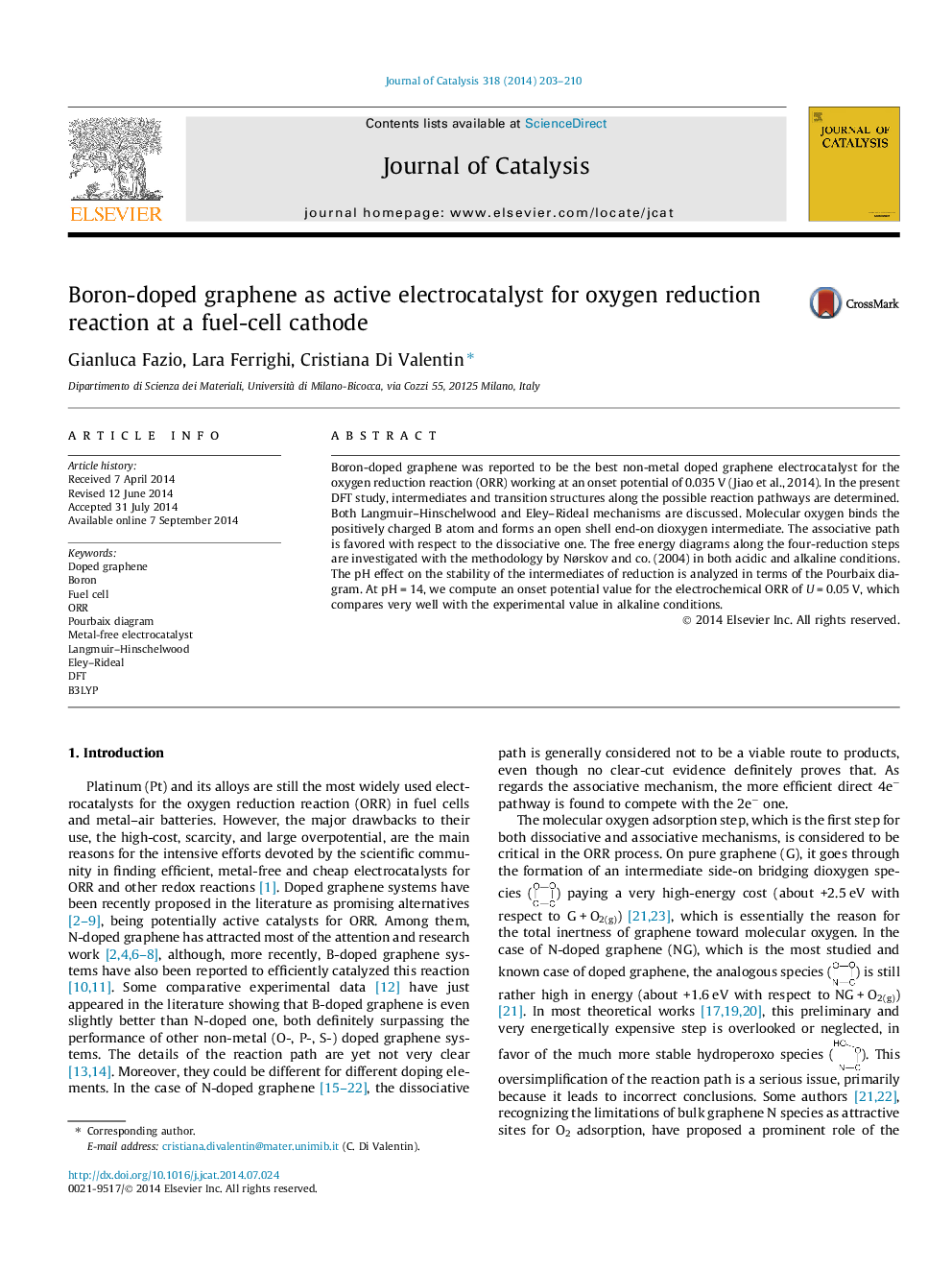| Article ID | Journal | Published Year | Pages | File Type |
|---|---|---|---|---|
| 61075 | Journal of Catalysis | 2014 | 8 Pages |
•ORR pathways on B-doped graphene are modeled with DFT calculations.•O2 adsorption on B-doped graphene goes through an open shell end-on species.•The associative path is the most favored.•Pourbaix diagram shows the intermediates stability at varying pH.•At pH = 14, the calculated and experimental Uonset are in excellent agreement.
Boron-doped graphene was reported to be the best non-metal doped graphene electrocatalyst for the oxygen reduction reaction (ORR) working at an onset potential of 0.035 V (Jiao et al., 2014). In the present DFT study, intermediates and transition structures along the possible reaction pathways are determined. Both Langmuir–Hinschelwood and Eley–Rideal mechanisms are discussed. Molecular oxygen binds the positively charged B atom and forms an open shell end-on dioxygen intermediate. The associative path is favored with respect to the dissociative one. The free energy diagrams along the four-reduction steps are investigated with the methodology by Nørskov and co. (2004) in both acidic and alkaline conditions. The pH effect on the stability of the intermediates of reduction is analyzed in terms of the Pourbaix diagram. At pH = 14, we compute an onset potential value for the electrochemical ORR of U = 0.05 V, which compares very well with the experimental value in alkaline conditions.
Graphical abstractFigure optionsDownload full-size imageDownload high-quality image (72 K)Download as PowerPoint slide
